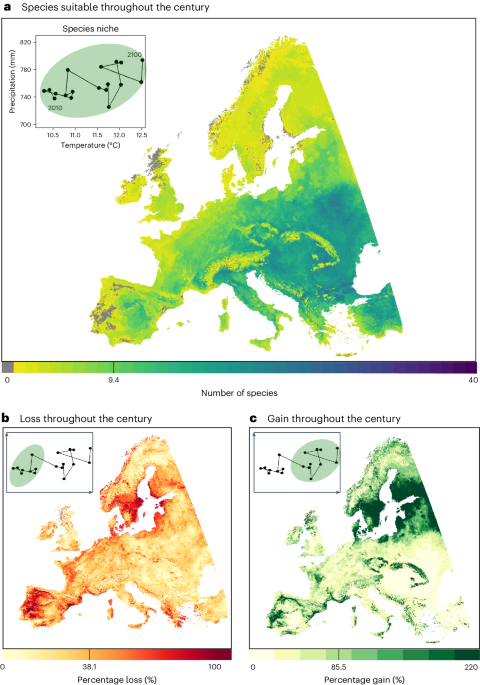Abstract
Large pulses of tree mortality have ushered in a major reorganization of Europe’s forest ecosystems. To initiate a robust next generation of trees, the species that are planted today need to be climatically suitable throughout the entire twenty-first century. Here we developed species distribution models for 69 European tree species based on occurrence data from 238,080 plot locations to investigate the option space for current forest management in Europe. We show that the average pool of tree species continuously suitable throughout the century is smaller than that under current and end-of-century climate conditions, creating a tree species bottleneck for current management. If the need for continuous climate suitability throughout the lifespan of a tree planted today is considered, climate change shrinks the tree species pool available to management by between 33% and 49% of its current values (40% and 54% of potential end-of-century values), under moderate (Representative Concentration Pathway 2.6) and severe (Representative Concentration Pathway 8.5) climate change, respectively. This bottleneck could have strong negative impacts on timber production, carbon storage and biodiversity conservation, as only 3.18, 3.53 and 2.56 species of high potential for providing these functions remain suitable throughout the century on average per square kilometre in Europe. Our results indicate that the option space for silviculture is narrowing substantially because of climate change and that an important adaptation strategy in forestry—creating mixed forests—might be curtailed by widespread losses of climatically suitable tree species.


